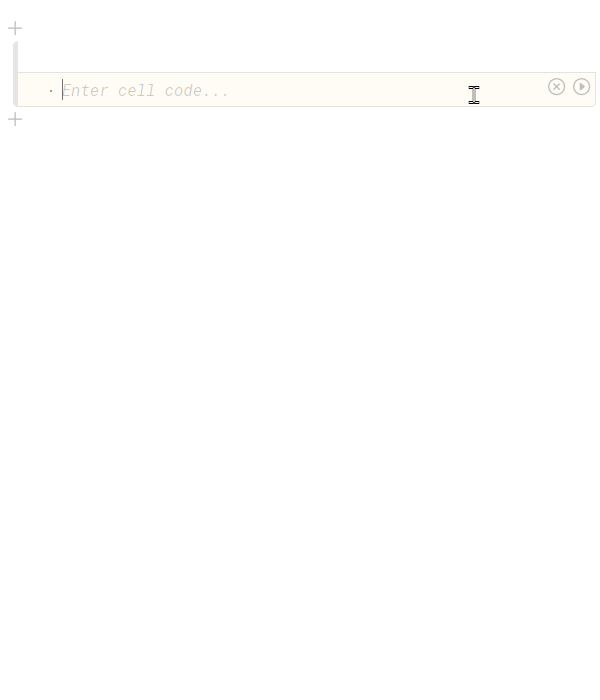Writing a notebook is not just about writing the final document — Pluto empowers the experiments and discoveries that are essential to getting there.
Explore models and share results in a notebook that is
- reactive - when changing a function or variable, Pluto automatically updates all affected cells.
- lightweight - Pluto is written in pure Julia and is easy to install
- simple - no hidden workspace state; intuitive UI.
A Pluto notebook is made up of small blocks of Julia code (cells) and together they form a reactive notebook. When you change a variable, Pluto automatically re-runs the cells that refer to it. Cells can even be placed in arbitrary order - intelligent syntax analysis figures out the dependencies between them and takes care of execution.
Cells can contain arbitrary Julia code, and you can use external libraries. There are no code rewrites or wrappers, Pluto just looks at your code once before evaluation.
Your notebooks are saved as pure Julia files (sample), which you can then import as if you had been programming in a regular editor all along. You can also export your notebook with cell outputs as attractive HTML and PDF documents. By reordering cells and hiding code, you have full control over how you tell your story.
Pluto offers an environment where changed code takes effect instantly and where deleted code leaves no trace. Unlike Jupyter or Matlab, there is no mutable workspace, but rather a one-to-one correspondence between variables and code. In a Pluto notebook, a variable or function definition always corresponds to the code that defines it — there is no hidden state.
Your programming environment becomes interactive by splitting your code into multiple cells! Changing one cell instantly shows effects on all other cells, giving you a fast and fun way to experiment with your model.
In the example below, changing the parameter A and running the first cell will directly re-evaluate the second cell and display the new plot.
Lastly, here's one more feature: Pluto notebooks have a @bind macro to create a live bond between an HTML object and a Julia variable. Combined with reactivity, this is a very powerful tool!
notebook from vdplasthijs/julia_sir
You don't need to know HTML to use it! The PlutoUI package contains basic inputs like sliders and buttons.
But for those who want to dive deeper - you can use HTML, JavaScript and CSS to write your own widgets! Custom update events can be fired by dispatching a new CustomEvent("input"), making it compatible with the viewof operator of observablehq. Have a look at the sample notebooks inside Pluto to learn more!
For one tasty notebook 🥞 you will need:
- Julia v1.0 or above
- Linux, macOS or Windows, Linux and macOS will work best
- Mozilla Firefox or Google Chrome, be sure to get the latest version
Run Julia and add the package:
julia> ]
(v1.0) pkg> add PlutoUsing the package manager for the first time can take up to 15 minutes - hang in there!
To run the notebook server:
julia> import Pluto
julia> Pluto.run(1234)Then go to http://localhost:1234/ to start coding!
You can also run Pluto on a server, and use the browser on your own computer as user interface. For this, you need to set up an SSH tunnel. First, log in to your server using SSH and start a Pluto server. Then open a local terminal on your own computer and type:
ssh user@ipaddress -LN 1234:localhost:1234with user and ipaddress filled in accordingly. You can then go to http://localhost:1234/ on your own computer to get started! For more info and instructions for Windows, see this guide.
Follow these instructions to start working on the package.
We are happy to say that Pluto.jl runs smoothly for most users, and is ready to be used in your next project!
That being said, the Pluto project is an ambition to rethink what a programming environment should be. We believe that scientific programming can be a lot simpler. Not by adding more buttons to a text editor — by giving space to creative thought, and automating the rest.
If you feel the same, give Pluto a try! We would love to hear what you think. 😊
Questions? Have a look at the FAQ.
Created by Fons van der Plas and Mikołaj Bochenski. Inspired by Observable.




